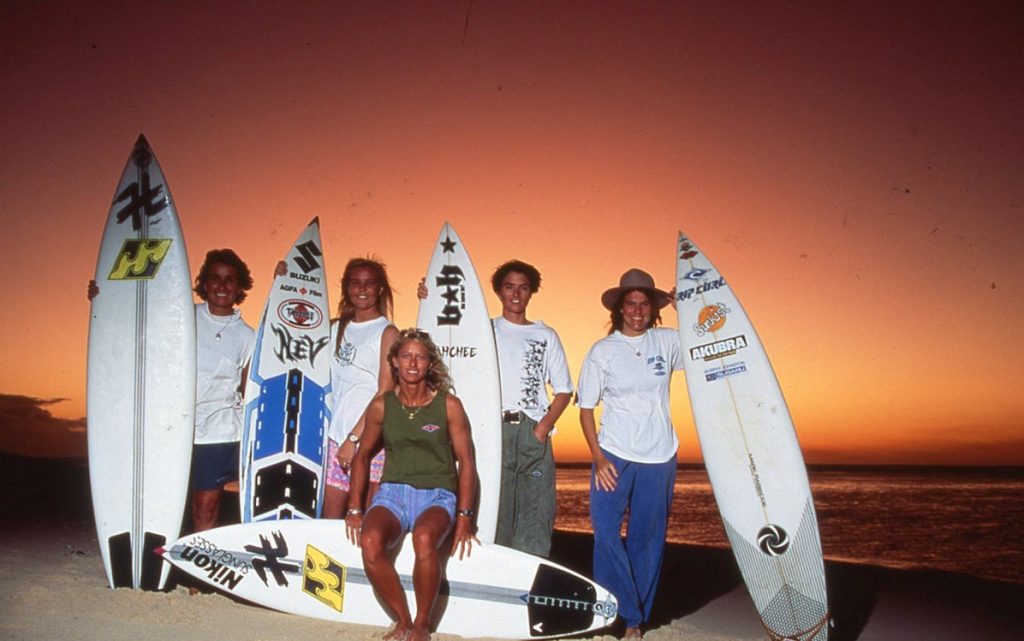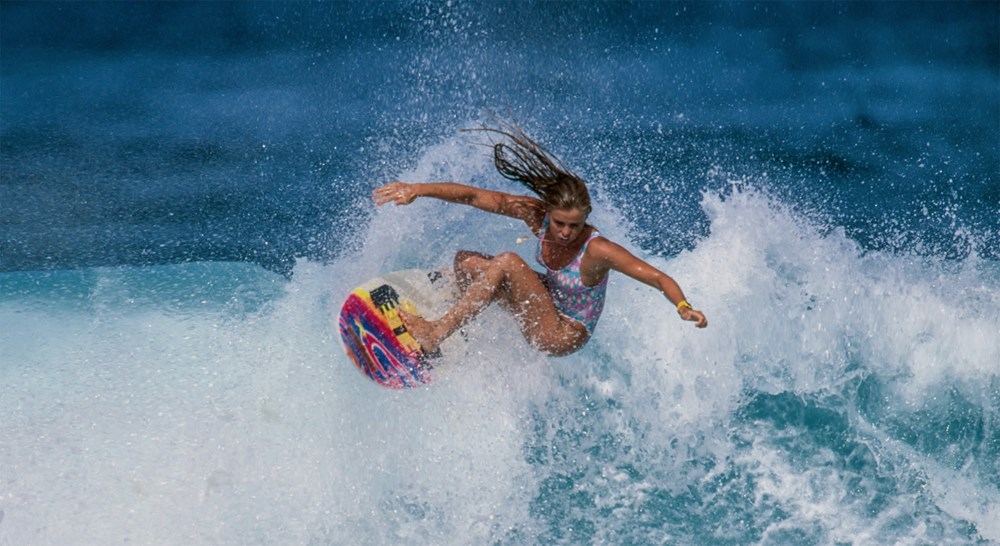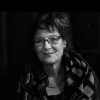Just like every other sport in Australia, and the world, the sport of surfing has found itself rife with issues of inequality, misogyny, and actively excluding women from participating. Christopher Nelius’ documentary, Girls Can’t Surf, takes a look at the many women of the Australian surf scene who have tackled the bloke-heavy world of surfing and cut a line in the waves for themselves, and the women who would come after them.
Featuring a wide array of interviews with icons like Layne Beachley, Wendy Botha, Pam Burridge, Jodie Cooper, Pauline Menczer, and Lisa Andersen, this fascinating documentary dives deep into the world of surfing with the help of stunning archival footage and imagery.
Andrew caught up with director Chris Nelius to talk about surfing, equality behind the scenes and in front of the camera, the Everest of archival footage, and representation in statues.
Andrew: I want to find out what drew you to this story of trying to find equality in a male dominated industry?
Chris: Well, to be honest, coming into it, that wasn’t my goal. I didn’t quite realise that it was an equality story. And I know that sounds odd, because I’m talking about women’s surfing in particular. So though you know the dichotomy of that, and men’s surfing is sort of what you expect it to be, I knew the sexism would be part of the story.
But I was mostly attracted to it because of the characters, these individuals. How the hell did these women do it? I’ve always been a fan of that 1980s surf world, just because it’s so wild. It’s pre-social media, even the guys were scrabbling to become superstars. There always looked like there was more money than there actually was. I knew that because I’ve got a couple of close friends who were pro-surfers in the 1980s, so I’d heard all those stories on the male side.
And somewhere along there, I thought, if they were scrapping for [the limited money]… how the hell did the women do it?
That sent me on a journey to ask: who is Pam Burridge? Where she now? Who is Pauline Menczer? Who is she now? When I did that initial dig, and started talking to them, ‘hi would you talk to me for an hour about your story’, that’s when I was like, wow, all of these women have their own powerful stories on their own.
That’s what really drew me into it. It wasn’t until I started to hear all of their stories as a group, and they talk about the industry and the institutional angle on the story, and things like the Roxy revolution, and all of those those types of things… Why was it that women weren’t being given decent waves to surf in?, and all of those questions, that’s when it started to become: This is a story about equality.
This is actually what’s wonderful for me is that Girls Can’t Surf is about these women, but it’s also genuinely about equality, and why equality is important. And that was probably something I didn’t truly discover, with my co-writer Juli-Anne De Ruvo until we were starting to put the edit together, and starting to put their stories together. When I was interviewing them as well, I asked, ‘did you realise you had this fight on your hands? Coming into it?’ ‘We’re all like, No, no, we just wanted to be stars and make money and beat the other girls…
Andrew: …at the competition…
Chris: yeah, yeah, exactly. Like any athlete would, male or female, except, because they’re women, they discovered that there’s actually this whole other thing that they had to do, which was promote and try and get the sport off the ground because no one wanted to help them do it. They would realise that was up to them.
Andrew: That semi answers the next question I was going to ask. As you’re discovering this kind of story, as you’re directing, and co-writing, was there any moment where you had a question of yourself whether you’re the right person to tell this story? I know that one of the main things, certainly in Australian film and international film at the moment, is equality behind the screen, and talking about ownership of stories. Was that something that you felt challenged by yourself as you’re making this film?

Chris: Yeah, in the very early beginning, I did. Yes.
So, it was my idea, I had the nose for it. I thought, I think there could be a film in this. And then I did very quickly think, am I the person to make it?
I probably had a few months there where I wondered if I can find the right woman to direct this story. I kept doing the research in the meantime, and I just started falling in love with it. And I started building a really good rapport with the four main surfers, and I kind of just felt in my heart that I could do it, and that I could do it really well.
The next thing that was very important to me was that if I’m going to be a guy telling the story, that I need to surround myself with the right women in significant roles in order to do it. So I knew I wanted a female producer (Michaela Perske). I knew I wanted a female editor (Julie-Anne De Ruvo). And I was lucky enough to know my editor Julianne for 20 years, we’re mates we’ve worked together before. And she’s also really brilliant writer as well. She agreed very early on to cut it.
So I felt a bit more like I wasn’t just being a dickhead bloke by wanting to direct it by surrounding myself with the right people. You know, a cinematographer was a woman (Anna Howard), production manager (Kiki Dillon), woman, researcher, a woman. That’s not really for the optics of it. They were the best people for the job.
Andrew: That’s the kind of answer that I was hoping to hear as well. We often forget that there are so many other people working on a film. And we often look at a film and go, well, Girls Can’t Surf is directed by this guy Chris Nelius, who is a man. Well, yeah, okay, but look at everybody else that’s behind the scenes as well. I think that, certainly for critics and for the media, we tend to forget that there are so many other people who are behind the scenes of these kinds of stories.
Chris: …and I don’t mind answering that question. I don’t mind being asked that question, either. I think it’s a totally valid question to ask, even if it was a pretty male focused story, we should just be asking the question: could it be a woman in this role here, right now? Let’s just ask it. Could we do it this way? And, it doesn’t have to be every single time and we don’t have to crucify ourselves over it either. But it’s just healthy if we ask those questions.
Andrew: I want to talk about the editing process of the film, because what impressed me the most, besides hearing all these powerful stories, is the quality of the footage and the photos that you’ve got. How did you go about that? And how did you go about collating all of that imagery?
Chris: The archive research on this one was an Everest. In itself, it was a mountain climbing expedition. And you didn’t always feel like you could even see the summit, or whether you’d gotten off base camp. It was rough.
I was lucky enough to have a team around me. But that team was driven to the edge in the process of doing it. We always knew it would be hard, because you’re talking about women in the 1980s, and coming into the 90s, where there just weren’t many photographers – who were all men – there weren’t many of them that stuck around when the women went out because the crowds didn’t stick around. There was just not many shooters who stuck around, so we knew we were going to have to try and find them and then also lean on more traditional sources like ABC TV and ESPN in the US or whatever and then we were really lucky with the women themselves.
They’ve kind of had all these beautiful personal archives, and videos, and they were just so generous in opening up those old crates of photos. It was then up to us to, as you say collate it all and say, ‘oh god, what year is this? And where are you here?’ It was it always felt like a detective thing. Sometimes Julianne and I were going, ‘hey Jodie (Cooper), what era’s this?’ She was like, ‘I don’t know!’
We were like, ‘oh god, this is someone in a jersey, does that say 1983 on it?’ We’d have to kind of piece it together there. It was really hard. There was one or two times where I wondered whether we had enough. But in the end, we did.
Andrew: It works out so well, it is really quite impressive. It just adds to the history of everything. It almost feels like as the film wraps up, and all of these decades of fighting for change take place, it’s informed by all of these images that just feel almost like they’ve been held aside for this exact moment for this exact film. It’s really brilliant. Congratulations.
Chris: Thank you.

Andrew: I want to talk as well about your work in relation to Pauline and getting a statue set up because I think that is really fantastic. It shows that there is life outside of this film for this recognition of the women surfers. Can you talk about that a little bit as well?
Chris: I’ve lived in sort of the Sydney’s East my whole life and been up around Bondi my whole life and still live around there. I think that’s why that idea came to me. I think every woman in this film should have a statue. That’s why the Pauline one jumped out at me.
I was looking at this footage of her in the 1980s, this little Grommit paddling out in South Bondi. Which was a heavy scene back then, it’s not like it is today. They used to call Bondi ‘Scum Valley’. It was different, it was really different. Not many people realise that, especially the some of the people swanning around Bondi these days.
I’ve seen over the last twenty years, the numbers of women change in the water to go from one or two here or there, to today where you can go surfing, and there’ll be 50/50, and have all different ages and abilities. And I would sometimes look at them in the water and go, I wonder if you even know who Pauline Menczer is?
You have time to meditate with the story in the edit suite, and it dawned on me that there’s only ever been one world title winner in surfing to come out of the Bronte/Bondi area. And there has been a lot of incredible surfers to come out there out of there and go on the pro tour, male and female, but she’s the only one that’s won a world title. And that’s where one day I was just like, ‘oh, there should be a statue of her at Bondi’. Why not? Like, why not?
Why don’t we lionise this little Grommit girl who was not going to take no for an answer. Who got told to get out of the water. Who paddled out at a time where there was hardly anyone else. We have a Wally Lewis statue outside Suncorp Stadium. So, how cool would it be to have a statue of a woman surfer? And for them to be a world title holder. Why aren’t we doing that? What’s stopping us from doing that?
And then I kind of pitched the idea to someone I know, she’s an editor of Marie Claire. And she said, ‘you know, I happen to have researched the statistics on statues in Australia’. And I can’t quite remember that exact stat, but it was somewhere between three and seven per cent of statues in Australia are women.
Andrew: Wow. That’s absurd. That’s crazy.
Tracey Spicer wrote about this for the Sydney Morning Herald, stating that ‘only three per cent of public statues in Australia honour non-fictional, non-royal women’.
Chris: And most of those royalty. The Queen Victoria, Queen, whoever, they’re mostly queens.
So it’s back to the equality again.
Why don’t we put in a statue of a woman at Bondi? She earned it. She’s an inspirational figure. Why shouldn’t every surfer that runs down to the beach, walk past that statue and know who she is?
At time of writing, there is a GoFundMe campaign for Pauline Menczer that has raised $57,618 that is to help make up for the prize money she didn’t receive in the nineties.
Find out more about Girls Can’t Surf here.



